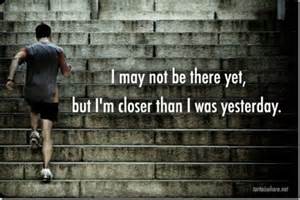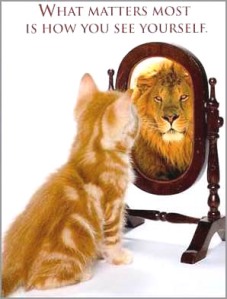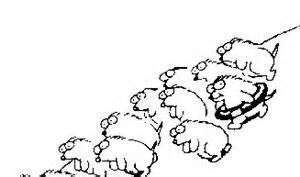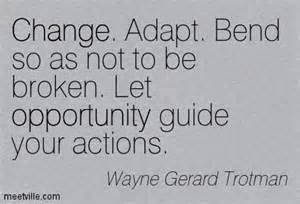In our many weeks of discussing change and strategies to deal with it, we’ve covered a lot of ground. Adapting to change or doing something to better fit with the new environment or the different conditions was what we last explored. Related to adaptation, but somewhat different, is transforming or transformation and that is on what we will focus this week.
By definition, a transformation is a change in form, appearance, nature, or character. It is an evolution into something different. (A sign at a local business in my community announces that it is ‘evolving’ into and then its new business name is given. The implication for the business given the use of the term evolving is that it will become something that looks, feels, and does things differently.) While true, it really is more than that. When something is transformed, it is expanded so that it becomes more than what it was. The metamorphosis of a caterpillar into a butterfly is a great example of a transformation. The caterpillar, in changing its appearance, literally expands its form and becomes much more than what it was; the transformation creates a new reality.

Not only is a new reality created in a transformation, but a whole new mindset also occurs. You ask, what do you mean by that, Becky? Let me use myself as an example. For the first six months of 2007, I was working as the head of school at Mount de Chantal Visitation Academy in Wheeling, WV. I lived in a house out in the country of SW Pennsylvania. I was very active in the community of Wheeling. I was a big sister to three young girls in the Big Brothers/Big Sisters program. And, I was just Aunt Becky to my nephew.
In July of that year, my sister-in-law, who had been battling breast cancer for eight years, received some devastating news. From July to December, I had to adapt to some changes in my life: leaving the realm of educational administration to become a caregiver for my sister-in-law and my nephew; leaving the community activities of Wheeling, including the Big Brothers/Big Sisters program; and, leaving my home in rural SW Pennsylvania.
I began a slow transformation from all that I was to this new being called “auntie-mom” in a whole new environment of suburbia. I truly had a shift in mindset, in consciousness. It was my nephew who pointed this out to me when we were discussing something and I reminded him that when he was young, he could tell me anything. He said, “That was then. This is now. Things are different. You can no longer just be Aunt Becky.”
The transformation from Aunt Becky to auntie-mom didn’t look any different on the outside. The difference was internal; it was in how I now thought and approached situations, especially with my nephew (more as a parent instead of one of the relatives who can relax the rules and spoil the child).

Transformed to the auntie mom role; behind the scenes and cheering nephew (in black and red) and at lacrosse games.
The transformation happened at my core and it really created a new existence for me. I knew the transformation was complete when I no longer cared to be what I used to be – a school leader, a community leader, a Big Sister – and loved being an auntie-mom. So, why is transformation an important strategy in dealing with change? When the change is so dramatic that one’s world becomes drastically different, that new mindset, that new consciousness – a transformation – might be needed so life can be positive and productive. Transformations bring about a future that is new which is something a particular change may necessitate. (Revisiting the June 2, 8, 16, and 23 posts on ending something, learning to let go, roaming the wilderness, and vision may be helpful in putting into perspective why transformations may be needed and useful.)
If you are dealing with a change that may necessitate a transformation, what are some things that will help with that?
Let go of the past. You must give up what is to get what will be. Mourn the past, what you are giving up, but don’t become stuck in it. Relish the memories, the good from the past. Learn from what was. As Louise Smith said, “You can’t reach for anything new if your hands are full of yesterday’s junk.”

Accept the loss. In order to be able to fully let go and embrace what the change brings, the acceptance of the loss, of the end of the current, is vital. You need to let go of the past in order to accept change and adjust to life, so that you can remain optimistic and create the future you want.
Ride the emotional roller coaster. You do need to acknowledge all the emotions that may overcome you. Just as a roller coaster has highs and lows, so will you. Deal with the lows: the anger, fear, sadness, frustration, sorrow. Embrace the highs: the hope, joy, relief, understanding. Allowing yourself to experience and work through the emotions will help free you from the past and help connect you to what will be.
Roam the wilderness. I call the place between what was and what will be the wilderness. William Bridges calls it the neutral zone. Others call is the void. Whatever term is used, this is the time in our transition where we have a foot in two worlds. For me, this was July to December 2007 when I was caring for my sister-in-law and nephew while at the same time still doing some of my professional work long distance. For the caterpillar/butterfly, this is the time spent in the cocoon. The wilderness gives us some space and time to reflect, think, question. A lot is unknown at this point and that is okay. The wilderness gives us time to explore.
While roaming the wilderness, experiment with the ideas that come to the surface. Use trial and error in deciding what to do, what direction in which to go, who to see. Be patient. Give others and yourself time to work through the thoughts, ideas, and suggestions that come to the surface. Be observant. Watch for “footprints in the snow” or those signs of how things are evolving. Capitalize on the moments of creativity. And, set short-term goals. Where do things need to be in a day? A week? At the end of the month? What should things look like in a day, week, or month? Listen to your inner voice. Your inner voice will help you to develop new understandings and to take advantage of new opportunities.

Capitalize on your childlike wonder. The September 22 post focused on using childlike wonder and awe to seek solutions and solve problems. Childlike wonder is an attitude that among other things, allows us to have little or no fear of the unknown, to be imaginative and creative, to take on challenges, to try new things, to believe we can achieve whatever we conceive. When dealing with the unfamiliar, unleash your inner child and see things with the eyes of wonder and awe. I have a poster with Marcel Proust’s quote, “The real voyage of discovery consists not in seeking new landscapes, but in having new eyes.” This is exactly what we need to do in our transformation – see something ‘for the first time.’
Build new skills. If your transformation is taking you in a direction where you will be doing something quite different, new skills may be needed. Work to develop them. Take classes. Talk to others. Read. Observe. Remember, “A butterfly is a transformation, not a better butterfly.” New skills were needed by the butterfly like learning to fly. It is the same with us.
Keep going. It is easy to start; many don’t finish. Don’t let your fears sabotage your process. Have a vision of your transformed self and let that be your motivation to keep going. If need be, write down how the vision can be achieved, and then work diligently to achieve what will be.
Transformation is a journey. It is a process. It takes time. It happens when your desire to live your new life replaces the desire to live the old life. When you no longer want things to go back to the way they were, you are transformed. Once a transformation occurs, you will never be what you once were. Transformation requires a change on both emotional and intellectual levels. It requires a willingness to make the journey. According to Dr. Henriette Mann, “The process of transformation challenges us to address, and indeed heal, those aspects of our being which we may be hesitant to acknowledge but which can prevent us from moving forward. Transformation involves change at the core of our being, change that is implemented in a thoughtful and intentional manner. Thus the process is rarely swift but rather involves slowing down long enough to truthfully examine and discern the deeper meaning in our lives. In this process we have to consider the ways in which the events of our lives and our actions have led us to our present reality. The result of such assessment can be increased clarity leading to a deeper integration between who we are and what we do. Such alignment is a key element in transformation.”
So, how do you see your transformed self?










